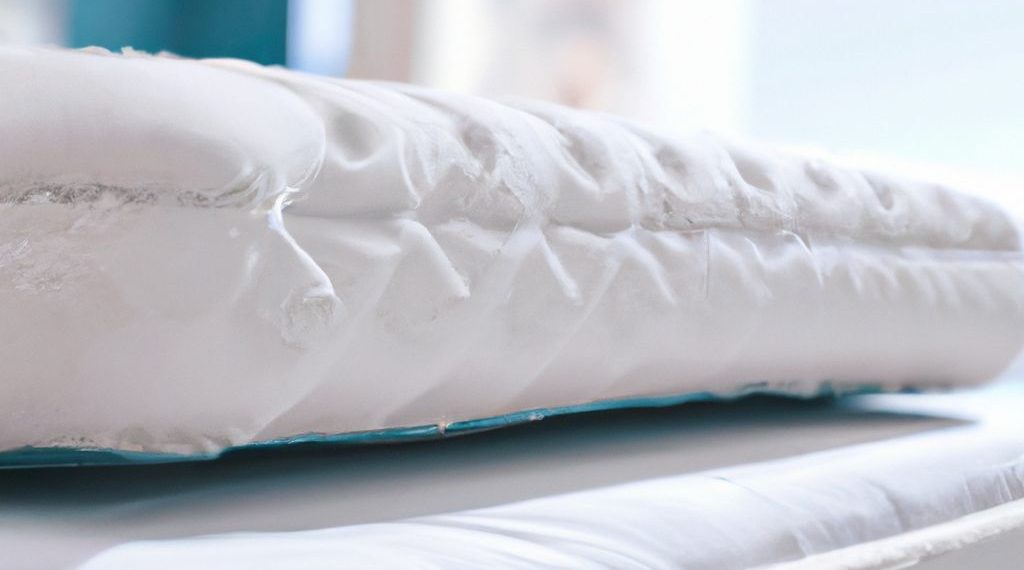Key takeaway:
- Patience and consistency are key when breaking in a memory foam mattress. It takes time for the mattress to soften, so don’t expect immediate results.
- Applying gentle pressure to the mattress can help accelerate the softening process. Use your hands or knees to apply pressure evenly across the mattress surface.
- Adjusting the ambient room temperature can also affect the softness of the memory foam mattress. Warmer temperatures can make the foam softer, while cooler temperatures can make it firmer.
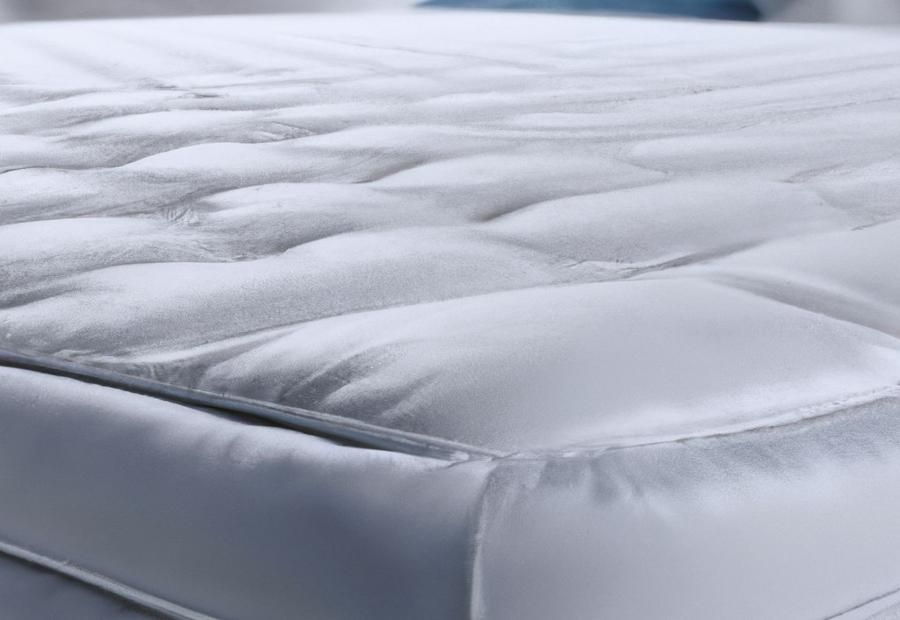
Photo Credits: Www.Mattressreviewguru.Com by Roger Robinson
Looking to make your memory foam mattress softer? Discover the benefits of memory foam mattresses and explore the common issue of mattress firmness. Find out how you can enhance your sleeping experience and achieve the perfect balance between comfort and support. With a deeper understanding of the benefits and potential challenges, you’ll be well-equipped to make informed decisions about optimizing the softness of your memory foam mattress.
Benefits of Memory Foam Mattresses
Memory foam mattresses offer a plethora of benefits that make them a popular choice for sleepers. Firstly, their composition allows them to contour to the body’s shape for personalized support and pressure relief. Secondly, these mattresses are well-known for their motion isolation properties. Lastly, they are highly durable and cost-effective in the long run.
In addition, memory foam mattresses also boast other advantages such as hypoallergenic properties and temperature regulation features. All in all, these benefits make memory foam mattresses an excellent pick for sleeping on a memory foam mattress in terms of comfort, support, and durability in a sleep surface.
Moreover, memory foam mattresses are also naturally hypoallergenic and resistant to dust mites and allergens, which can be beneficial for those with allergies or asthma. Additionally, many memory foam mattresses also come with advanced cooling technologies to regulate body temperature.
If you find your memory foam mattress too firm, there are tips to make it softer and more comfortable than a cloud!
Common Issue: Mattress Firmness
Memory foam mattresses are renowned for their ability to adapt to body shapes and provide comfort. But many people may find them too firm. To soften a memory foam mattress, break it in by using it continuously. Be consistent and patient; the mattress will gradually soften with use. Applying pressure, such as by kneeling or walking on it, can also help. Temperature can have an effect too; higher temperatures make it softer, while lower temperatures make it firmer. Putting a wooden slatted frame beneath the mattress aids airflow and softening. Adding a soft mattress topper, like a plush or down-filled one, can also customize the softness. Be aware of return policies and sleep trials to ensure satisfaction. Breaking in a memory foam mattress is like breaking a bad habit – it takes patience and consistency!
Breaking in a Memory Foam Mattress
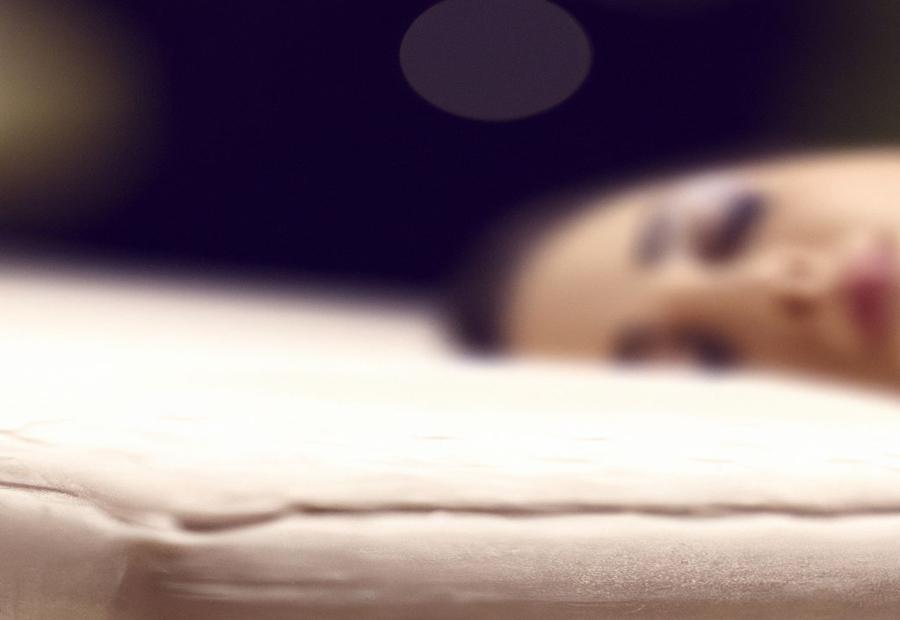
Photo Credits: Www.Mattressreviewguru.Com by Jordan Roberts
Breaking in a memory foam mattress involves understanding the importance of patience and consistency, as well as the recommended duration for this process. By diligently following these guidelines, you can effectively soften your mattress and enhance your overall sleeping experience.
Importance of Patience and Consistency
Memory foam mattresses need patience and consistency to break-in. Patience and consistency are key in this process. It takes time to adjust to your body and sleep habits. The material needs time to soften and become comfortable to your body shape.
Using the mattress for a long time helps it to adjust to you. It may take weeks or even months to fully break-in. You can help by applying gentle pressure while lying on the bed. This helps to loosen the foam cells.
Temperature can also help soften the memory foam. Warmer temperatures make it softer. Cooler temperatures make it firmer. A slatted wooden frame allows for better air circulation. This helps promote good memory foam mattresses.
You can also add a soft mattress topper to make your memory foam mattress softer. Pick one that complements the mattress and doesn’t interfere with its supportive properties.
Tip: Read the manufacturer’s guidelines and recommendations for best results.
Recommended Duration for Breaking In
The breaking in process for a memory foam mattress is key for achieving optimal comfort and performance. To ensure this, it’s recommended to give the mattress sufficient time to adjust and conform to your body shape. Here are 3 steps to follow:
- Step 1: Use the Mattress Regularly
- Step 2: Gently Apply Pressure
- Step 3: Adjust Room Temperature
Using the mattress regularly helps the purple mattress adapt and shape to your body over time.
\n
Applying gentle pressure by sitting or lying on different spots of the mattress facilitates the breaking in process. This enables the foam to mold with your body better.
\n\nTo make your memory foam mattress softer, it is recommended to choose the best mattresses for those with scoliosis. Applying gentle pressure by sitting or lying on different spots of the mattress facilitates the breaking in process. This enables the foam to mold with your body better.
The ambient room temperature can impact the firmness of a memory foam mattress. A slightly warmer room will help soften the mattress, while a cooler one may result in a firmer feel.
It’s important to remember that everyone has their own preferences when it comes to mattress firmness. Some may prefer a softer feel from the start, while others may enjoy a slower breaking in period. Trying out different approaches can help determine what works best for you.
Tips to Make a Memory Foam Mattress Softer
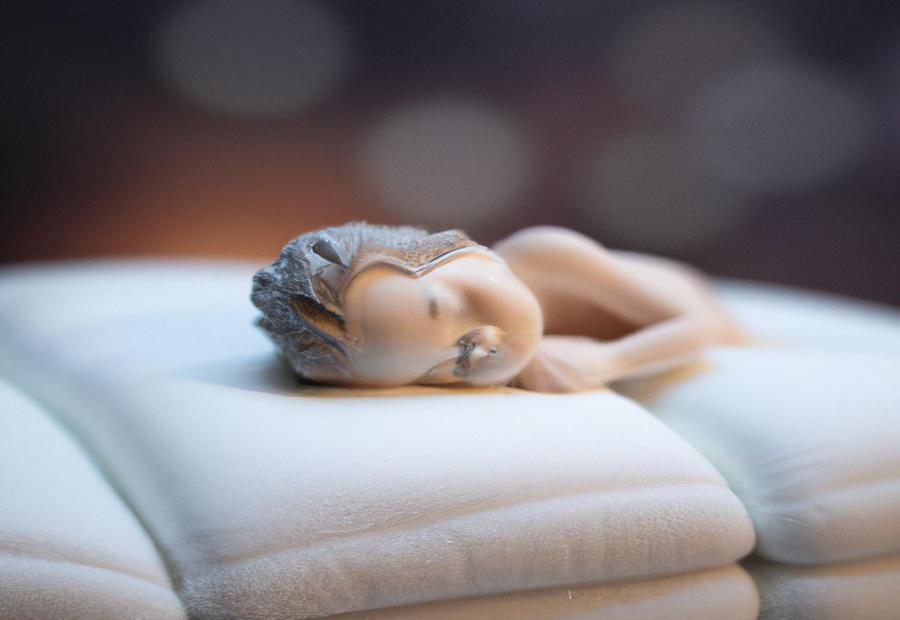
Photo Credits: Www.Mattressreviewguru.Com by Jack Taylor
Looking to soften your memory foam mattress for a more comfortable sleep? This section provides practical tips that can make a noticeable difference. From utilizing the mattress consistently to adjusting the room temperature and considering a slatted wooden frame, we’ll explore various methods that can enhance the plushness of your mattress. Plus, we’ll delve into the benefits of using a soft mattress topper. Get ready to transform your sleeping experience into a cloud-like oasis.
Step 1: Use the Mattress Continuously
Using a memory foam mattress consistently is key to making it softer. It’ll adjust and conform to your body shape, giving better support and relieving pressure. This use will break in the mattress and make it more responsive, enhancing softness.
To use the mattress consistently, follow these
- Sleep on it every night for a few weeks. Consistency is key.
- Avoid leaving it unused, like on vacation. This disrupts the breaking-in process.
- Rotate your body position during sleep. This distributes weight evenly.
- Have others who share the bed use it too. This ensures all areas are equally worn down.
- Use a breathable mattress protector. This prevents heat build-up and affects the softness.
- Limit activities like working or eating on the bed. This preserves cleanliness and prevents strain on the memory foam.
By using the mattress regularly and following these steps, you’ll gradually make it softer. Temperature and slatted wooden frames also affect the mattress’s softness. Plus, a soft mattress topper will give extra cushioning and plushness. Keep these tips in mind as you strive to achieve the desired level of softness and comfort.
Step 2: Apply Gentle Pressure to the Mattress
Gently applying pressure to a memory foam mattress is a key step in making it softer. This helps it to relax and adapt to the body for a more comfortable sleep. To do this, distribute your weight across the surface, then use your hands or elbows to press into firmer areas. Move in circles or tap lightly to encourage the foam to soften. Do not press too hard, as this can damage the foam. If still firm, consider adding a mattress topper for extra cushioning.
Different people have different preferences when it comes to softness. Experiment to find the best combination of techniques for you and your mattress. Also, adjust the ambient room temperature for a cozy feel.
Step 3: Adjust the Ambient Room Temperature
Adjusting the ambient room temperature is key! It can affect the firmness and conformability of your mattress, plus regulate moisture levels. Too much moisture can cause mold and mildew, so keep the temp just right! Also, invest in a mattress protector to keep your mattress safe from spills, stains, and allergens.
Step 4: Consider Using a Slatted Wooden Frame
- A slatted wooden frame could be used to make a memory foam mattress softer.
- Widen the gaps between the slats to allow more airflow. This keeps the mattress cooler, making it softer.
- Check that the slats are thick enough for adequate support and evenly spaced for even weight distribution.
- For further comfort, use an adjustable base. This allows for customizing the sleeping position and relieving pressure points.
- Check the manufacturer’s instructions for any specific recommendations on using the frame with the foam mattress.
- Consider these factors when using a slatted wooden frame to potentially enhance the softness and comfort of the memory foam mattress.
- Topping it off: adding a soft mattress topper for a cloud-like sleep experience.
Step 5: Adding a Soft Mattress Topper
- If you want to make your memory foam mattress softer, adding a soft mattress topper is an option. It’s step 5! This extra layer of padding provides cushioning and comfort.
- Choose materials like down alternative or memory foam for the best softness and support.
- Carefully consider the thickness when selecting the topper. A thicker one gives more cushioning and a softer feel. But be careful not to over-do it – too thick and it could reduce mattress supportiveness.
- Secure the topper with elastic straps or corner pockets too. This will keep it in place and evenly distributed, stopping any discomfort.
- Adding the topper will enhance your sleeping experience. But don’t expect a sleep trial to do all the work – you’ll have to put in the effort yourself!
Considering Returns and Sleep Trials
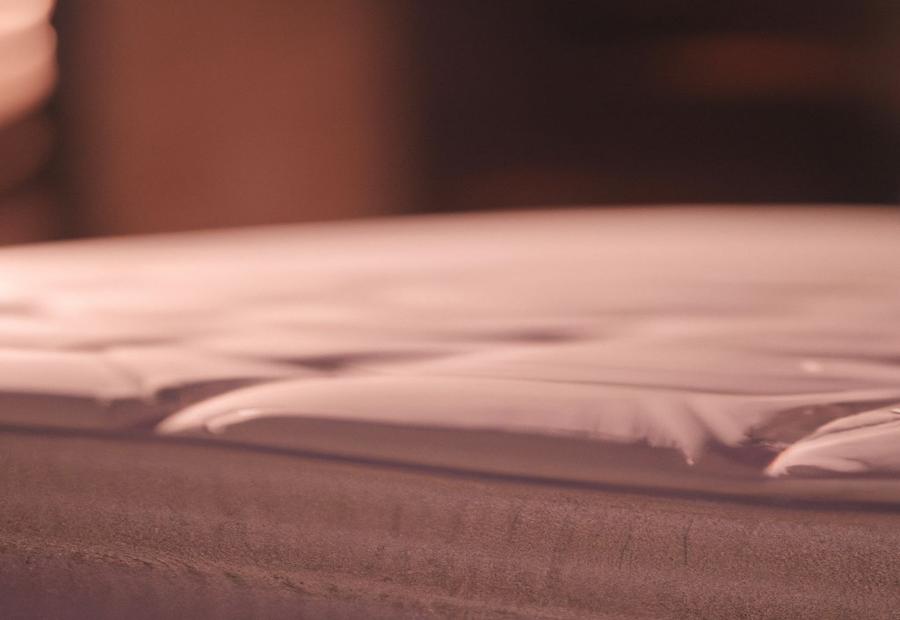
Photo Credits: Www.Mattressreviewguru.Com by Tyler Thompson
When it comes to choosing a memory foam mattress, it’s crucial to consider the returns and sleep trials offered. Discover the varying sleep trial durations for memory foam mattresses and understand the return policies for both online and physical store purchases. With these insights, you can ensure that you make an informed decision and find the perfect balance of comfort and support for a good night’s sleep.
Sleep Trial Duration for Memory Foam Mattresses
Sleep trial duration for memory foam mattresses can vary. It’s important to check the recommended duration before buying.
No specific details are provided. However, 30-365 nights is common. This gives customers time to try it at home and see if it suits their needs.
During this trial period, they can check firmness, pressure relief and comfort. If it’s not suitable, they can usually return it within the trial duration.
It’s key to review return policies for both online and physical stores. Some retailers may have fees or conditions for returns. Read and understand these policies before buying.
Pro Tip: Research sleep trial duration and return policies to get a good night’s sleep!
Return Policies for Online and Physical Store Purchases
When it comes to online purchases, many retailers offer a sleep trial period of 30-120 nights. If you’re not satisfied, most retailers will allow returns for a full refund or exchange.
Physical stores have different policies. Some offer trials, returns, or exchanges, while others may have stricter rules and charge restocking fees for returns. Be sure to ask about the store’s policy before buying.
Memory foam mattresses may be non-returnable due to hygiene reasons, so make sure you research the terms and conditions associated with your purchase.
If you need to return or exchange your memory foam mattress, act promptly and follow the return policy’s steps. Don’t delay, or you may miss out on the chance to get the perfect mattress.
Conclusion: Softening a Memory Foam Mattress Takes Time and Effort
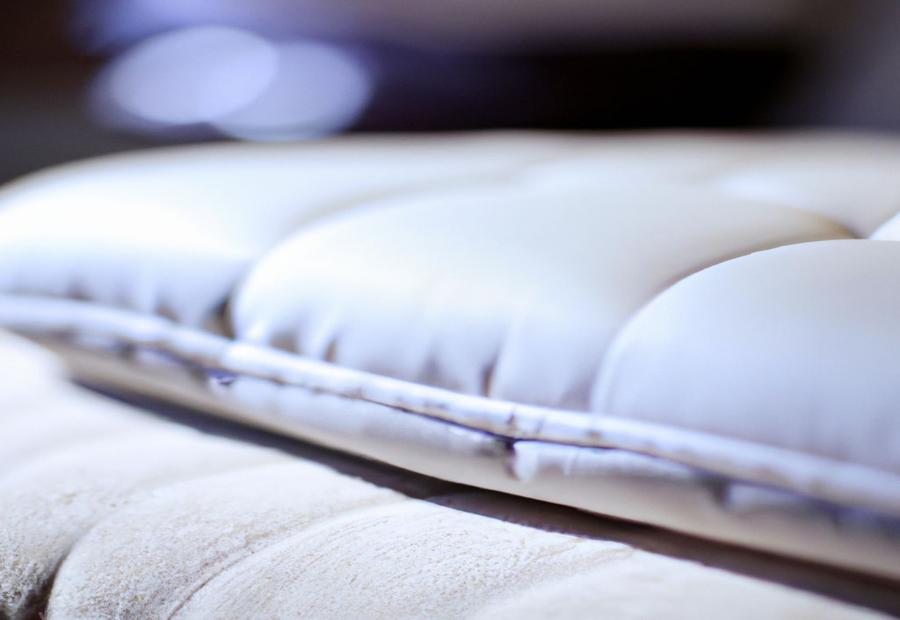
Photo Credits: Www.Mattressreviewguru.Com by Jason Mitchell
Softening a memory foam mattress takes time and effort. One way to do this is by using a mattress topper. This extra layer adds cushioning and creates a comfier surface. Rotating and flipping the mattress helps even out body weight, stopping damage in specific spots and keeping the softness. Breaking it in is another way to soften. This is done by using the mattress over time, so it adjusts to the body and becomes more flexible. If these steps are followed, a softer sleep surface will be achieved and comfort improved.
Some Facts About How To Make My Memory Foam Mattress Softer:
- ✅ Most memory foam mattresses will get softer with time and use. (Source: sleepadvisor.org)
- ✅ Breaking in the mattress by sleeping on it and adding weight to it can help make it softer. (Source: sleepmasterscanada.com)
- ✅ Using a mattress topper with a lower density and thickness can also make the bed more comfortable. (Source: sleepmasterscanada.com)
- ✅ Warming up the room or using heated blankets can soften the memory foam mattress. (Source: sleepmasterscanada.com)
- ✅ The Ecosa memory foam mattress offers adjustable firmness levels to create a comfortable sleeping experience. (Source: ecosa.com.au)
FAQs about How To Make My Memory Foam Mattress Softer
How long does it take for a new memory foam mattress to soften?
Most memory foam mattresses will soften up over time and use. The softening process usually occurs over 7-60 nights of continuous use, with noticeable softening happening in the first 7 nights.
Can I make my memory foam mattress softer by applying pressure?
Yes, applying gentle pressure to the mattress using your hands, knees, or body weight for 10-30 minutes each day can help the fibers relax and loosen up, resulting in a softer feel. However, avoid applying concentrated pressure or standing on the mattress to prevent damage.
Does body heat affect the softness of a memory foam mattress?
Yes, body heat can play a role in softening a memory foam mattress. Memory foam is temperature sensitive and tends to become softer when exposed to body heat. The ambient room temperature can also be increased to help the memory foam expand and soften.
Can a mattress topper make my memory foam mattress softer?
Absolutely! Placing a soft mattress topper on top of your firm memory foam mattress can provide quick softening without having to wait for the fibers to relax. It can also improve airflow and make it easier to change positions for a more comfortable sleep.
How long should I give my new memory foam mattress to break in before deciding to return it?
It is recommended to give your new memory foam mattress around 30-60 nights of continuous use to break in and adjust to your body shape and weight. Most memory foam mattresses will become softer and more comfortable over time. If it still feels too firm after this period, you may consider returning it based on the return or refund policy.
Where can I get further guidance and solutions for making my memory foam mattress softer?
You can contact experts at an online mattress store for personalized guidance and solutions. They can provide advice on mattress toppers, adjusting firmness, and other options to make your memory foam mattress softer.

